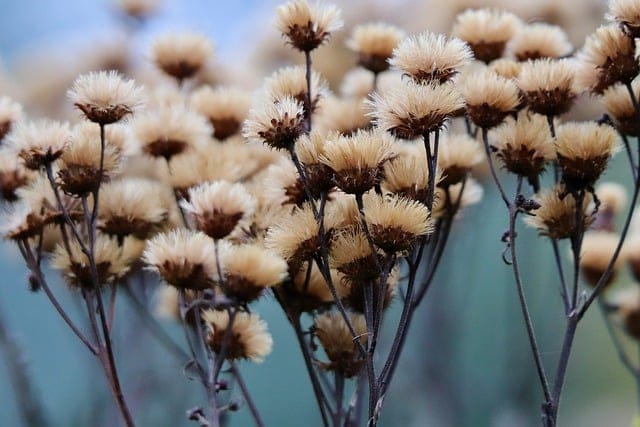How to grow Asters
The Aster flower is a beautiful and versatile plant that can bring color and vibrancy to any garden

In this article:
- Introduction
- Choosing the Right Variety of Aster
- Selecting the Ideal Growing Environment
- Planting Asters
- Proper Watering and Irrigation Techniques
- Fertilizing Asters
- Pruning and Maintenance
- Dealing with Common Pests and Diseases
- Propagation Methods
- Division and Transplanting Asters
- Overwintering Asters
- Companion Planting with Asters
- Creative Uses for Asters in the Garden
- Frequently Asked Questions (FAQs)
- Conclusion
Introduction
The Aster flower is a beautiful and versatile plant that can bring color and vibrancy to any garden. With a wide range of varieties to choose from, growing Asters can be a rewarding experience for both experienced and novice gardeners. This article will guide you through the different aspects of growing Asters and provide helpful tips and techniques to ensure success.
Choosing the Right Variety of Aster
Before you start growing Asters, it is important to choose the right variety that suits your needs. Asters come in a variety of colors, sizes, and bloom times. Some popular varieties include New England Asters, China Asters, and Michaelmas Daisies. Consider factors such as bloom time, height, and color preferences when selecting your Asters.
Selecting the Ideal Growing Environment
Asters thrive in well-drained soil and require a minimum of six hours of sunlight each day. Choose a location in your garden that receives ample sunlight and ensure the soil is loose and fertile. Asters prefer slightly acidic soil with a pH ranging from 6.0 to 7.0. It is also important to provide them with good air circulation to prevent diseases.
Planting Asters
Plant Asters in early spring after the danger of frost has passed. Dig a hole that is twice the width and depth of the root ball and place the Aster plant into the hole. Gently backfill the hole with soil, making sure the roots are well-covered. Apply a layer of organic mulch around the plants to help conserve moisture and suppress weed growth.
Proper Watering and Irrigation Techniques
Asters require regular watering to establish healthy roots and promote vigorous growth. It is important to provide them with deep, thorough watering rather than frequent shallow watering. Water the plants at the base to prevent wetting the foliage, as this can lead to diseases. Monitor the soil moisture and adjust watering frequency depending on weather conditions.
Fertilizing Asters
Fertilizing Asters is essential for promoting healthy growth and abundant blooms. Apply a balanced, slow-release fertilizer during the growing season, following the instructions on the packaging. Avoid over-fertilization, as this can lead to excessive foliage growth at the expense of flowers. Regularly monitor the plants for signs of nutrient deficiencies and adjust the fertilizer accordingly.
Pruning and Maintenance
Asters benefit from regular pruning and maintenance to ensure compact growth and prolonged blooming. Pinch back the plants in early summer to encourage branching and prevent legginess. Deadhead spent flowers regularly to promote continuous blooming and prevent seed production. Remove any diseased or damaged foliage to prevent the spread of diseases.
Dealing with Common Pests and Diseases
Asters can be susceptible to certain pests and diseases, including powdery mildew, aphids, and slugs. Monitor your plants regularly and take appropriate measures to control pests and diseases. Use natural or organic pest control methods whenever possible, such as introducing beneficial insects or using insecticidal soaps.
Propagation Methods
Asters can be propagated through various methods, including seeds, division, and stem cuttings. Collect seeds from mature flowers in the fall and sow them in a well-prepared seedbed. Division can be done in spring or fall by carefully separating the root clumps and replanting them. Stem cuttings can be taken in early summer and rooted in a suitable growing medium.
Division and Transplanting Asters
Dividing Asters every 2-3 years is important to maintain their vigor and prevent overcrowding. Lift the entire clump of Aster plants and carefully separate them into smaller sections. Replant the divisions in well-prepared soil, ensuring each plant has enough space to grow. Transplanting should be done in early spring or late fall to minimize stress on the plants.
Overwintering Asters
Asters are hardy perennials and can withstand cold winter temperatures. However, providing some protection can help them survive and thrive during winter. Apply a layer of mulch around the plants to insulate the roots and protect them from extreme temperature fluctuations. Avoid excessive watering during winter and remove any dead or damaged foliage.
Companion Planting with Asters
Asters are great companion plants and can be used to enhance the beauty and functionality of your garden. They pair well with other fall-blooming perennials such as goldenrod, sedum, and ornamental grasses. Asters can also attract beneficial insects like bees and butterflies, making them a valuable addition to pollinator gardens.
Creative Uses for Asters in the Garden
In addition to being lovely ornamental plants, Asters can also be used creatively in the garden. Consider planting them in containers, hanging baskets, or flower borders to add pops of color and texture. They can also be used as cut flowers in floral arrangements or dried for decorative purposes.
Frequently Asked Questions (FAQs)
Q: How often should I water my Asters?
A: Asters should be watered deeply once or twice a week, depending on weather conditions and soil moisture levels.
Q: Can Asters tolerate full sun?
A: Yes, Asters thrive in full sun, but they can also tolerate partial shade.
Q: Do Asters attract pollinators?
A: Yes, Asters are excellent attractors of bees, butterflies, and other beneficial insects.
Conclusion
Growing Asters can be a rewarding gardening experience, as these beautiful flowers can bring life and color to any garden. By choosing the right variety, providing ideal growing conditions, and following proper care and maintenance techniques, you can enjoy vibrant blooms of Asters year after year. With a little effort and patience, you can create a stunning Aster garden that will be the envy of your neighbors.
